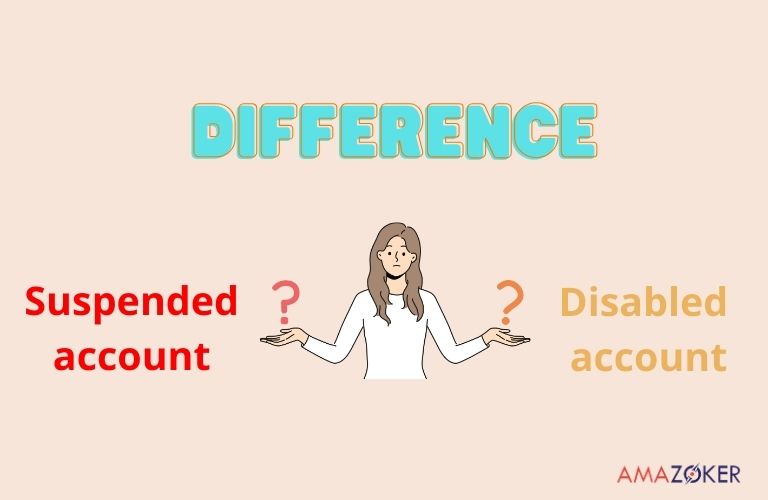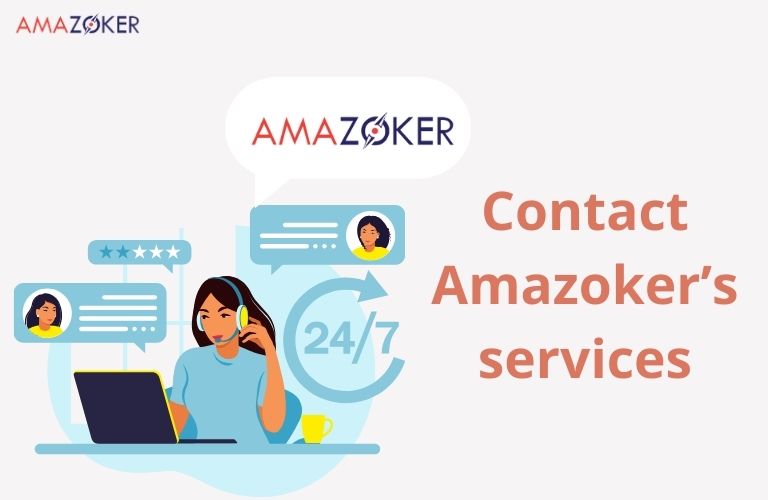If you are an Amazon seller and you receive a notification that Amazon deactivated account, you may feel shocked, frustrated, and confused. What does it mean to have your account deactivated? How is it different from having your account suspended or disabled? How can you recover from this situation and get your account reinstated? And how can you avoid this problem in the future? In this post, we will answer these questions and provide you with some tips and resources to help you deal with Amazon seller account deactivated.
What Does “Amazon Account Deactivate” Mean?
Amazon deactivated account means that Amazon has terminated your selling privileges and removed your access to your seller account. This means that you can no longer sell, list, or advertise any products on Amazon, and you can no longer access your seller dashboard, inventory, orders, reports, or payments. You may also lose your funds, reviews, and ratings, and face legal action from Amazon or the rights owners.

The understanding about your Amazon account deactivation
Amazon deactivated account is a serious and permanent action that Amazon takes when it has grounds to believe that you have violated its policies or rules, or that you have engaged in fraudulent, illegal, or harmful activities. Some of the common reasons for Amazon deactivated account are:
- Selling prohibited or restricted products, such as counterfeit, stolen, or unauthorized products, or products that infringe the intellectual property rights of others.
- Providing false or misleading information, such as product details, customer reviews, or seller identity.
- Manipulating or abusing Amazon’s systems, such as ranking, feedback, or advertising.
- Failing to meet Amazon’s performance standards, such as order defect rate, cancellation rate, late shipment rate, or valid tracking rate.
- Failing to comply with Amazon’s agreements, such as the Terms of Use, the Seller Code of Conduct, or the Program Policies.
Difference between suspended account and disabled account
Amazon deactivated account is different from Amazon account suspension or Amazon account disablement. Here are the main differences between them:
- Amazon account suspension means that Amazon has temporarily removed your selling privileges and restricted your access to your seller account. You can still log in to your seller account, but you cannot sell, list, or advertise any products on Amazon. You can also access your seller dashboard, inventory, orders, reports, or payments, but you cannot make any changes or transactions. You can appeal the suspension and request for reinstatement, but there is no guarantee that you will get your account back.
- Amazon account disablement means that Amazon has permanently removed your selling privileges and blocked your access to your seller account. You cannot log in to your seller account, and you cannot sell, list, or advertise any products on Amazon. You cannot access your seller dashboard, inventory, orders, reports, or payments, and you cannot make any changes or transactions. You cannot appeal the disablement or request for reinstatement, and you cannot open a new seller account.
- Amazon deactivated account means that Amazon has permanently removed your selling privileges and deleted your seller account. You cannot log in to your seller account, and you cannot sell, list, or advertise any products on Amazon. You cannot access your seller dashboard, inventory, orders, reports, or payments, and you cannot make any changes or transactions. You cannot appeal the deactivation or request for reinstatement, and you cannot open a new seller account.

Important differences between Amazon suspended account and Amazon disabled account
How To Recover from Amazon Account Deactivation
If your account has been deactivated, you may still have a slim chance to recover it, depending on the reason and severity of your violation. However, you should be prepared for the worst-case scenario, as Amazon deactivated account is usually final and irreversible. Here are some steps you can take to try to recover from Amazon seller account deactivated:
- Read the notification email or message from Amazon carefully and understand the reason and evidence for your account deactivation. You should also review the relevant policies or rules that you have violated, and the consequences and actions required from you.
- Contact Amazon’s Seller Support or Account Health team and request for clarification or reconsideration of your account deactivation. You should explain your situation and provide any documents or information that can support your case, such as invoices, receipts, certificates, licenses, or authorization letters. You should also apologize for your mistake and show that you have learned from it and that you are committed to complying with Amazon’s standards and expectations.
- Wait for Amazon’s response to your request. Amazon may reinstate your account, reject your request, or ask for more information from you. If you get reinstated, you should follow Amazon’s instructions and guidelines to restore your account and resume your selling activities. If you get rejected, you can try to contact Amazon again or seek legal advice. If you get asked for more information, you should provide it as soon as possible and wait for Amazon’s decision.
Amazoker’s Complaints and Recovery Services
If you need help with recovering from Amazon seller account deactivated, or resolving any other issues related to your Amazon seller account, you can use Amazoker’s complaints and recovery services, a professional e-commerce solution provider that specializes in Amazon appeal service, account suspension appeal, listing optimization, and more. Amazoker can help you with the following benefits:
- Save time and effort. Amazoker can take care of the entire process for you, from analyzing the root cause of your account deactivation, to preparing and submitting your request for reinstatement, to resolving any issues and monitoring your account status.
- Increase your chances of success. Amazoker has a proven track record of helping Amazon sellers recover their accounts or listings with their effective and customized request letters and plans of action. They know how to communicate with Amazon and follow their guidelines and best practices. They also have access to the latest information and updates on Amazon’s policies and rules.
- Protect and grow your business. Amazoker can help you not only recover your selling privileges, but also protect and develop your Amazon business. They can help you optimize your listings, improve your performance metrics, increase your visibility and sales, and avoid future deactivations or policy violations.

Amazoker’s complaints and recovery services, a professional e-commerce solution provider
How to Avoid Amazon Seller Account Deactivation
To avoid Amazon seller account deactivated, you should follow these best practices:
- Always check the product restrictions before listing a product on Amazon. Do not sell products that are prohibited, restricted, or require approval or authorization without proper documentation.
- Always provide accurate and complete product information, such as title, description, images, condition, or attributes. Do not use misleading, false, or exaggerated claims, or infringe the intellectual property rights of others.
- Always monitor your account health and performance metrics. Maintain a low defect rate, a low cancellation rate, and a low late shipment rate. Respond to customer inquiries and feedback promptly and professionally.
- Always operate only one seller account unless you have legitimate business and need to open a second account and all of your accounts are in good standing. Do not share your account information or access with anyone else or use a third-party service or software that has access to multiple seller accounts. Do not use the same network, device, or information as another seller who has a deactivated account.
- Always comply with Amazon’s agreements, such as the Terms of Use, the Seller Code of Conduct, or the Program Policies. Read and understand the policies and rules that apply to your products, categories, or markets, and keep yourself updated on any changes or updates.
In conclusion, the terrain of Amazon deactivated account is daunting, but not insurmountable. Educate yourself on Amazon’s policies, tread cautiously, and implement preventive measures to safeguard your selling privileges. In the unfortunate event of deactivation, approach recovery with a methodical plan, seeking assistance from reputable services if necessary. Remember, perseverance coupled with compliance can often pave the way for account reinstatement.











